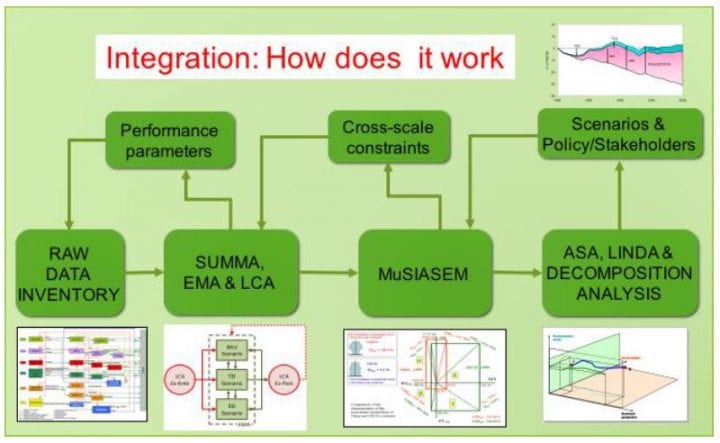Significance for Policy-Makers, stakeholders and Other Researchers: the Added Value of Combining Different Approaches
Figure 2 shows the sequence, feedbacks and iterative links among the different approaches developed and tested in EUFORIE. They range from raw data inventory, through processing via SUMMA, LCA and EMA (performance assessment) and MuSIASEM (economic, demographic and biophysical constraints explored across scales) to modelling and scenario making according to economic narrative (via ASA, decomposition analysis, and LINDA modelling). Each step provides data and performance indicators to the downstream one, which in turn offers feedbacks to the upstream steps for refocusing and better monitoring.

Figure 2. Integration among the different approaches applied within the EUFORIE project.
Take-home messages from the EUFORIE project:
- Transparent policy making requires decisions to be based on narratives, data, indicators and scenarios agreed upon by and available to everybody.
- Procedures and toolkits to generate performance indicators, impact assessments and scenarios must be designed and implemented in a way that the stakeholders can understand. Transparent data processing enhances the social robustness of results, thus im-proving the quality of the decision making process.
- Mono-dimensional indicators are unlikely to provide sufficient understanding and are thus no suitable basis for public discussion, robust decisions and conflict management.
- It is possible to design and implement calculation procedures that convert data into indicators and then characterise pros and cons of potential choices while promoting participatory strategies and deliberating over policy roadmaps.
- The tool kit developed in EUFORIE offers the necessary tools, procedures and methods for such improved approaches to decision making.
